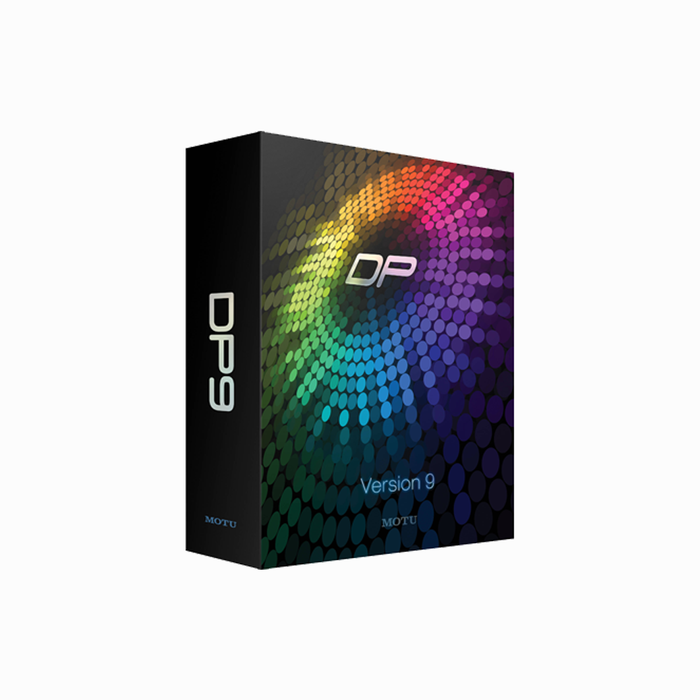

- #MOTU DIGITAL PERFORMER WITH USB HOW MANY TRACKS INSTALL#
- #MOTU DIGITAL PERFORMER WITH USB HOW MANY TRACKS PRO#
- #MOTU DIGITAL PERFORMER WITH USB HOW MANY TRACKS SOFTWARE#
- #MOTU DIGITAL PERFORMER WITH USB HOW MANY TRACKS MAC#
The UI works particularly well on lower resolution MacBooks and MacBook Pros. I found that I liked working with the Tracks view to the top left, audio or MIDI editing in the bottom left, and the mixing board to the right, but you can create just about any setup using the horizontal and vertical drawbars in each window. The consolidated interface lets you display multiple views simultaneously. If you've used Digital Performer before, you'll find the main user interface environment instantly familiar.

#MOTU DIGITAL PERFORMER WITH USB HOW MANY TRACKS SOFTWARE#
But I personally have no problem with software activations as long as they work reliably and are easy to perform.
#MOTU DIGITAL PERFORMER WITH USB HOW MANY TRACKS PRO#
Apple Logic Pro and the PC-based Cakewalk SONAR still lead the field in this respect, because they don't require copy protection at all.
#MOTU DIGITAL PERFORMER WITH USB HOW MANY TRACKS MAC#
This is far preferable to Steinberg's copy protection scheme for Cubase 7, which uses a proprietary eLicenser dongle, or Avid's for Pro Tools 10, which relies on the more common but still frustrating iLok key – both of which take up one of the two precious USB ports on all Mac laptops.
#MOTU DIGITAL PERFORMER WITH USB HOW MANY TRACKS INSTALL#
Install and activate DP8 on a third machine, and it doesn't fight you it just deactivates the first one. On the software side, MOTU gives you two activations, so you can use the program on, say, a desktop and a laptop. In DP 3, you do this by choosing "Add Audio Track > Stereo Voice" in DP 4, you choose "Add Track > Stereo Audio Track" or "Add Track > Mono Audio Track" from the Project menu.Fortunately, there's no hardware-based copy protection. The steps for making an Audio Track to record the output of your keyboard into are the same as above, except you'll create an Audio track instead of an Aux track. This step would be useful if the keyboard was leaving your studio for awhile, or if you needed to make a CD of your song (when you bounce to disk, only Audio Tracks are bounced, not Aux or MIDI tracks). This Aux Track lets you hear/mix/effect the output of your keyboard!Īnother option would be to make an audio track and record the output of your keyboard onto it, just like you would with any other audio. Set the Output of the Aux track to "Analog 1-2" or "Main Out 1-2". Set the input of this Aux track to the inputs on your MOTU audio interface that you plugged your keyboard into.In DP 4, create an Aux Track by choosing "Project menu > Add Track > Aux Track". In DP 3, you do this by choosing "Add Audio Track > Stereo Aux" from the Mini-Menu, in the upper left hand corner of the Tracks Overview window. Plug the audio outputs from your keyboard into some inputs on your MOTU audio interface.Don't alter your MIDI track: That will remain the same. These are the steps for bringing the audio from your keyboards or othter MIDI modules in Digital Performer. This works fine, but sometimes it's nice to bring the output of your keyboard into the computer, for recording or monitoring purposes, or to add effects (without the steps mentioned below, you can't add Everb or other effect to your MIDI tracks!). One is to take the audio outputs of your keyboard and plug them into a mixer, along with the output of your computer or audio interface. To make your keyboard audible, you have a couple choices.


In other words, that MIDI cable going from your MIDI interface to your keyboard doesn't carry audio, just MIDI. A MIDI track just tells your keyboard what notes and sound to play, while an audio track actually contains a sound waveform.


 0 kommentar(er)
0 kommentar(er)
